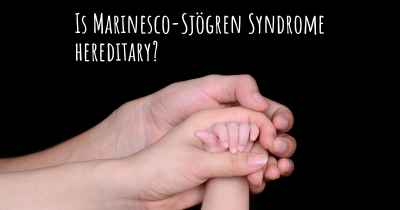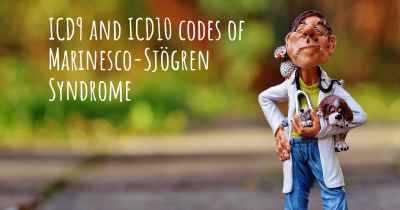What is the history of Marinesco-Sjögren Syndrome?
When was Marinesco-Sjögren Syndrome discovered? What is the story of this discovery? Was it coincidence or not?

Marinesco-Sjögren Syndrome: A Rare Genetic Disorder
Marinesco-Sjögren Syndrome (MSS) is a rare genetic disorder characterized by a combination of symptoms affecting various systems of the body. It was first described independently by two physicians, Jules Marinesco and Sven Sjögren, in the early 20th century. Let's delve into the history of this syndrome and the significant milestones in understanding and diagnosing it.
Discovery and Early Observations
The first documented case of Marinesco-Sjögren Syndrome was reported by Jules Marinesco, a Romanian neurologist, in 1921. Marinesco observed a 5-year-old girl with congenital cataracts, muscle weakness, intellectual disability, and cerebellar ataxia. He noted the presence of certain characteristic features, such as a small head (microcephaly) and a peculiar facial appearance.
Shortly after Marinesco's report, Sven Sjögren, a Swedish ophthalmologist, independently described a similar syndrome in two sisters. Sjögren focused on the ocular manifestations, including congenital cataracts and nystagmus (involuntary eye movements). He also noted the association of intellectual disability and muscle weakness.
Recognition as a Syndrome
Over the following decades, more cases of MSS were reported, and researchers began to recognize it as a distinct syndrome. In 1968, the term "Marinesco-Sjögren Syndrome" was coined by Dr. Victor Dubowitz, a British pediatric neurologist, to honor the contributions of both Marinesco and Sjögren.
Genetic Basis and Advances in Diagnosis
It wasn't until the late 1990s that significant progress was made in understanding the genetic basis of MSS. Researchers identified mutations in the SIL1 gene as the underlying cause of the syndrome. The SIL1 gene provides instructions for producing a protein involved in the proper folding of other proteins within the endoplasmic reticulum, a cellular structure involved in protein processing.
With the identification of the SIL1 gene mutations, genetic testing became an essential tool for diagnosing MSS. This allowed for more accurate and early detection of the syndrome, enabling appropriate management and support for affected individuals and their families.
Clinical Features and Multi-System Involvement
MSS is characterized by a wide range of symptoms affecting multiple systems of the body. The most common features include:
- Congenital cataracts: Clouding of the lens of the eye present at birth.
- Muscle weakness: Hypotonia (low muscle tone) and muscle wasting, leading to motor delays and difficulties with movement.
- Cerebellar ataxia: Impaired coordination and balance due to dysfunction of the cerebellum, a part of the brain responsible for motor control.
- Intellectual disability: Developmental delays and cognitive impairment of varying degrees.
- Characteristic facial features: These may include a small head, a prominent forehead, a short nose, and a triangular-shaped face.
Research and Future Perspectives
Despite the progress made in understanding MSS, many aspects of the syndrome remain poorly understood. Ongoing research aims to further elucidate the molecular mechanisms underlying the disorder and explore potential therapeutic interventions.
Advancements in genetic technologies, such as next-generation sequencing, have facilitated the identification of additional genes that may contribute to MSS. This knowledge could lead to improved diagnostic accuracy and potentially targeted treatments in the future.
Conclusion
Marinesco-Sjögren Syndrome is a rare genetic disorder that was first described by Jules Marinesco and Sven Sjögren in the early 20th century. Over time, it has been recognized as a distinct syndrome with characteristic features affecting multiple systems of the body. The identification of SIL1 gene mutations and subsequent advances in genetic testing have greatly improved the diagnosis and management of MSS. Ongoing research continues to expand our understanding of the syndrome and may pave the way for future therapeutic interventions.








